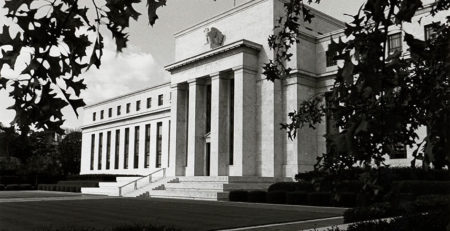Supertall Towers and the Skyscraper Curse
Perceiving economic bubbles can often be more an art than a science. The first step towards discovering the existence of a bubble is having a sound economic theory that allows you to discover a bubble. That means an understanding that bubbles are created through injections of easy money and credit into the banking system. But then you have to figure out where that money and credit is flowing, which is a bit more difficult.
Skyscrapers and Economic Bubbles
Thankfully there are a few well-known indicators that can help one ascertain that the economy is in a bubble. One of those is known as the skyscraper curse. It just so happens that major economic crises often coincide with the completion of major skyscrapers. The relationship isn’t purely coincidental.
Because central bank injections of money and credit into the banking system force interest rates lower, businesses are incentivized to borrow this cheap money in order to bring about future development. Lower interest rates lead to an increase in long-term, capital-intensive projects. Long-term projects that might not be profitable at a 6 percent interest rate may very well become profitable at a 3 percent interest rate.
So when interest rates are lowered, businesses start to borrow and build. Low-interest rates are what allow companies to be able to borrow enough money to build skyscrapers, projects which require vast amounts of capital and long periods of time in order to complete. And that’s why the development of ultra-tall skyscrapers is often an indicator of an economic bubble. Projects that try to build the world’s tallest skyscraper or the tallest in large cities often serve as leading indicators of an overheated economy.
The Empire State Building was completed in 1931, as the Great Depression began to get underway. The World Trade Center in New York was completed in 1973, just before the stagflation that was brought about by the Federal Reserve’s loose monetary policy began to take effect. The Burj Khalifa in Dubai was topped out in late 2008, right as the financial crisis hit.
Now there is a trend of new supertall skyscrapers underway in New York. Towers such as 432 Park Avenue, the new tallest residential skyscraper in New York, are taking advantage of a booming market in high-end properties to offer luxury skyscraper apartments to those with the means to afford them.
The towers that have recently been completed will soon be surpassed by newer and even taller projects. That surge of projects is fueled by cheap credit. When interest rates start to rise, those skyscrapers will ultimately be shown to be unprofitable. Vacancy rates will remain high, just like the Empire State Building when it was first completed. Residential units will take longer to sell, and units that were sold at the height of the boom will change hands in short sales or foreclosures.
Supertall skyscrapers are a physical manifestation of an economic bubble, and the taller they are built the larger the bubble is. Investors who pay heed to signs like the skyscraper curse have an advantage over those who don’t. They notice the bubble peaking and can move their investments to safety before the crash comes.
That’s why gold has performed so well this year as an investment. A lot of people are beginning to see signs of the bubble all around them and are trying to move their assets to safety. And it isn’t just institutional investors who are nervous, it’s individual investors too.
Thankfully it’s easier than ever for ordinary investors to buy gold and silver. Gold and silver have acted as hedges against inflation and safe havens against financial calamity for centuries. When banks fail and paper money isn’t worth the paper it’s printed on, gold and silver will always be there as a store of wealth.
Especially for those nearing retirement, it’s important to keep your retirement assets protected against the likelihood of a financial crash. Diversifying into gold and silver can help provide that protection, and with a gold or silver IRA, it’s easier than ever. Now you can benefit from the same tax advantages that conventional IRAs enjoy, while still owning gold and silver that will protect your assets. Don’t let the skyscraper curse jinx your retirement portfolio, look into investing in gold and silver today.






